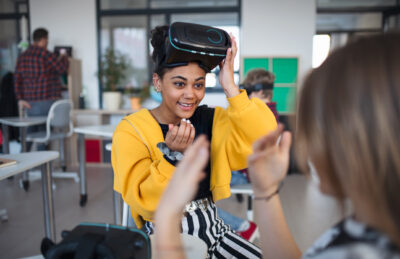Turning VR’s Promise Into Practice: Strengthening Career Readiness and Human Skills
Through four years of hands-on classroom experience in SIL engagements, JFF has gathered compelling evidence that VR can be a powerful educational tool that benefits educators and learners everywhere. Immersive scenarios encourage users to step outside their comfort zones in a safe environment, helping them build confidence, embrace risk-taking, and adopt proactive learning approaches. These self-directed experiences ignite creativity, agency, and motivation, inspiring learners to develop resilience and plan for their futures.
By actively participating in designing their educational experiences, learners report feeling a greater sense of ownership, building critical skills, and forging deeper connections with the material. This process fosters personal growth, helping learners manage emotions, embrace failure, and increase self-awareness.
Additionally, VR provides hands-on opportunities to explore career paths, develop job-specific skills, and cultivate the confidence needed to thrive in an evolving workforce. The Skill Immersion Lab helps learners grow into leaders by strengthening their interpersonal and technical skills, preparing them to navigate real-world challenges and lead effectively.



